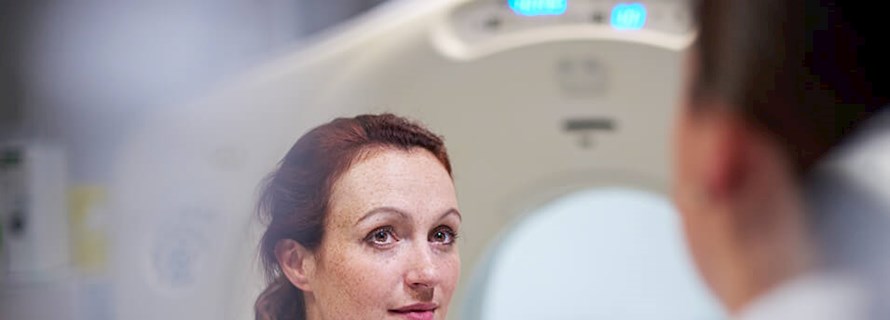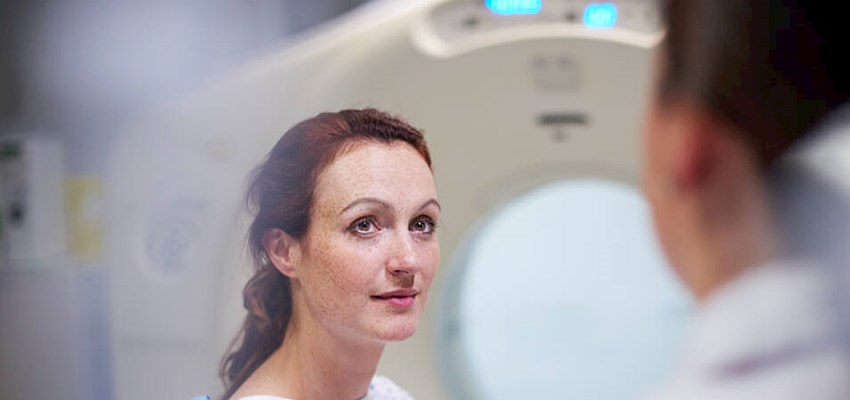Carotid ultrasound
A scan of the arteries in the neck that carry blood to the brain
A procedure that uses sound waves to examine the blood flow through your carotid arteries
What does a carotid ultrasound show?
A carotid ultrasound tests for narrowed carotid arteries, which can increase the risk of stroke.
The results can help your consultant determine a treatment to lower your stroke risk.
Need to know
-
What happens during a carotid ultrasound scan? icon plus
A sonographer will conduct the test using a small, hand-held device (transducer). This device emits sound waves and records the echo as the waves bounce off tissues, organs and blood cells.
A computer translates the sound waves into an image on a monitor in real-time. Your sonographer may use a Doppler ultrasound, which shows blood flowing through the arteries. A carotid ultrasound usually takes about 30 minutes. -
How to prepare for your ultrasound icon plus
No special preparation is required for this procedure. Wear loose, comfortable clothing and leave jewellery at home. A comfortable shirt with no collar is ideal. -
After the ultrasound icon plus
You will be able to leave immediately following your scan. Your consultant will review the results of your scan and if the tests reveal that you are at risk of a stroke then your consultant will talk you through your treatment options.
Our radiology teams
Our hospitals and outpatients centres offer a comprehensive range of radiology scanning, with experienced radiographers taking you through your scan, and radiologists interpreting the results.




Our locations
From complex surgery to diagnostic tests and procedures, we provide exceptional care across our network of hospitals, outpatient centres and specialist clinics.
Book diagnostic tests and scans
Our advisors can help with enquiries about booking a diagnostic scan and can help you book an appointment for a diagnostic test or scan once you have been referred by a GP or consultant.
Call us on
020 7079 4344